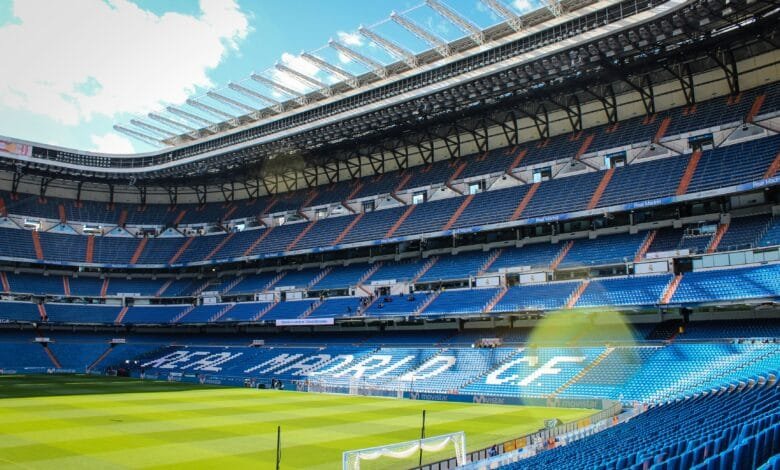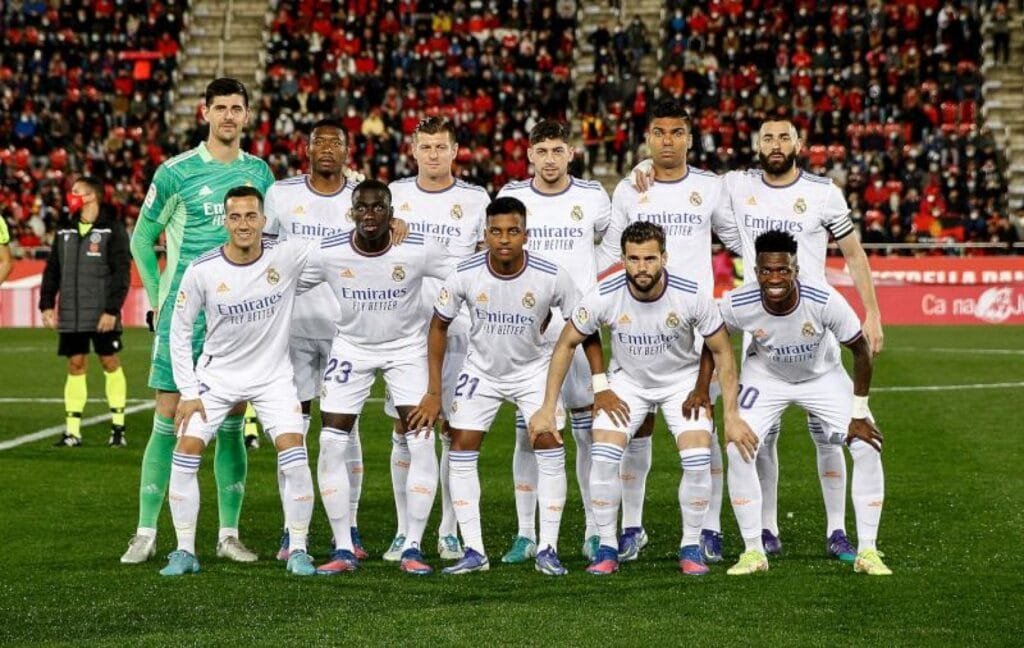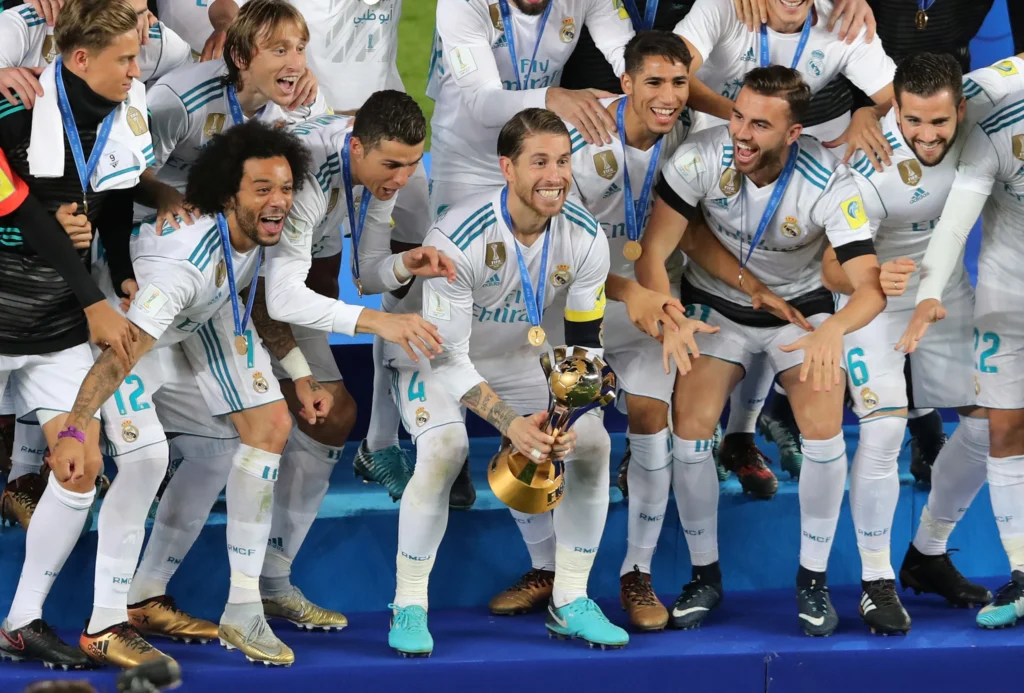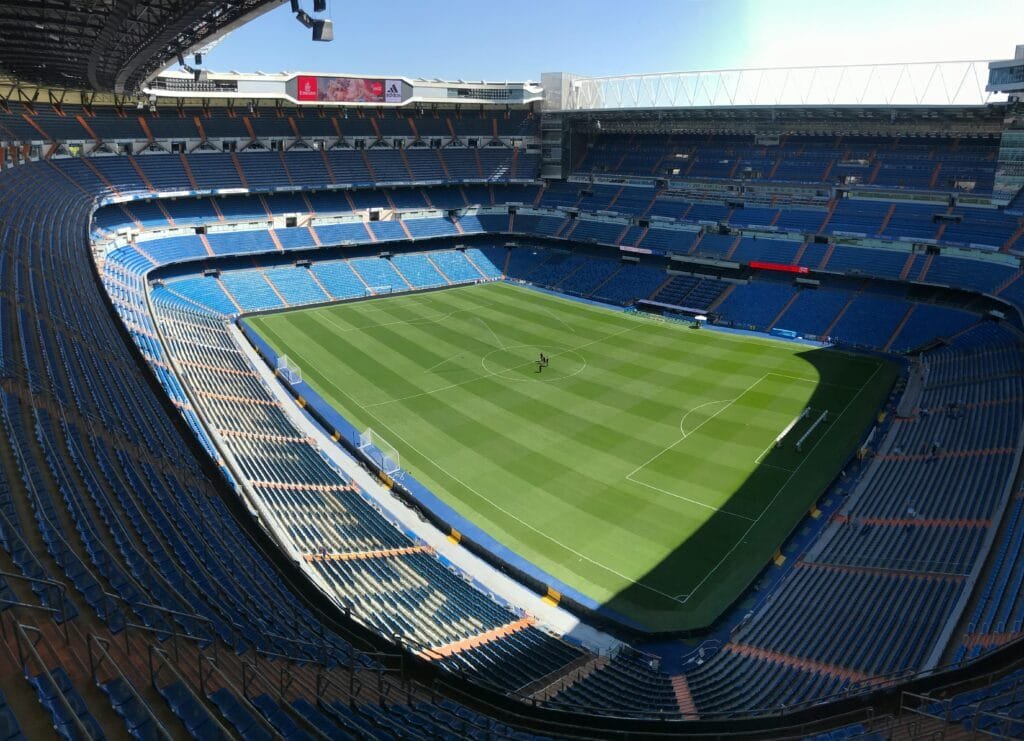Real Madrid The Untold Story of Glory and Greatness
A Timeline of Historic Triumphs and Unmatched Success

The Birth of Real Madrid
Table of Contents
The establishment of Real Madrid in 1902 marked a pivotal moment in the history of football and Spanish sports culture. The club’s origins can be traced back to the efforts of a group of Spanish football enthusiasts, most notably Juan Padrós, who played a crucial role in its formation. In March 1902, this group convened to create a team that would represent not just a locality but the burgeoning spirit of a nation captivated by the new sport. They decided to name it “Madrid Football Club,” a moniker that would later evolve into the iconic “Real Madrid Club de Fútbol.”
Real Madrid faced several initial challenges that tested the resolve of its founders. The early years were marked by local rivalries, financial struggles, and the ambiguity of football’s place in society. The club competed in regional competitions, gradually building a reputation among fans in Madrid. The support for the team began to flourish, driven by the passion of its initial players and supporters who rallied behind the idea of a football club distinguished by dedication and skill.
By 1905, Real Madrid had secured its first significant victory by claiming the Copa del Rey, the premier cup competition in Spain at the time. This achievement not only validated the club’s existence but also solidified its status as a competitive force in Spanish football. Over the following years, Real Madrid continued to attract talented players and dedicated supporters, leading to a strengthened identity rooted deeply in the community.
\
As the years progressed, Real Madrid began to evolve beyond local significance, aspiring to gain wider recognition. The club’s foundation was an unfolding narrative that intertwined determination, resilience, and a shared ambition, laying the groundwork for what would become one of the most successful and celebrated football clubs in history.
\
The Early Years: Struggles and Growth
Real Madrid Club de Fútbol, established in 1902, began its journey amidst a primarily unaffiliated landscape of Spanish football. The initial struggle for recognition compelled the club to participate in regional competitions, establishing a foundation that would define the club’s identity. Early successes in these local tournaments nurtured a sense of ambition, driving Real Madrid forward despite sporadic challenges.
The establishment of the Copa del Rey in 1903 marked a significant turning point for the club. Real Madrid won its first title in 1905, setting a precedent for future triumphs. The subsequent years saw the club competing fiercely against Barcelona, with matches igniting a rivalry that enhances the historical landscape of Spanish football. However, this early era was not without obstacles; financial difficulties and fluctuations in leadership led to instability during the 1910s, affecting the club’s performance on the pitch.
The Spanish Civil War (1936-1939) profoundly impacted Real Madrid, mirroring the social and political turmoil of the era. The conflict disrupted lives and led to a hiatus in league football. Following the war, the club emerged determined to rebuild and redefine itself in a post-war landscape. The arrival of Santiago Bernabéu as president in 1943 heralded a new era of modernization and growth. His vision of fostering talent and infrastructure laid the groundwork for Real Madrid’s future dominance in Spanish and European football.
As the decades progressed, Real Madrid gradually overcame initial challenges and embraced a competitive spirit that would propel it into a golden age. Through its formative years, the club established an unwavering commitment to excellence, setting the stage for the monumental achievements that would follow. The struggles and growth of Real Madrid during this period forged an unbreakable bond with its fans, helping the club carve a niche in football history.

The Emergence of a Football Giant
The post-war era marked a significant turning point for Real Madrid, propelling the club into the limelight of Spanish and international football. During the late 1940s and throughout the 1950s, Real Madrid established itself as a dominant force in La Liga, the premier football division in Spain. The resolution of World War II allowed for greater investment in the sport, and with strategic leadership and vision, Real Madrid aimed to capitalize on this opportunity.
The club secured its first La Liga title in the 1931-32 season, but the decade following the war saw an unprecedented series of domestic successes. Under the management of legendary coach Luis Carné, Real Madrid claimed five consecutive La Liga titles from 1960 to 1965, showcasing a combination of tactical prowess and sheer talent on the pitch. This period not only solidified the club’s prominence in Spain but also set the foundation for its future ambitions on the European stage.
Central to this rise was the introduction of iconic players, most notably Alfredo Di Stéfano. His arrival at the club in 1953 marked a transformative phase in Real Madrid’s history. Di Stéfano, often referred to as “La Saeta Rubia” (The Blond Arrow), possessed an extraordinary blend of technical skill, vision, and physicality that was unprecedented in the game at the time. His versatility allowed him to operate effectively in various positions, contributing not only as a prolific goal-scorer but also as a playmaker. The impact of Di Stéfano extended beyond individual brilliance; he inspired a generation of players and fans alike, reinforcing Real Madrid’s image as a powerhouse in football.
This era of success not only amplified Real Madrid’s status in Spain but also laid the groundwork for its stake in European football, leading to repeated triumphs in the European Cup, a tournament that would ultimately define the club’s legacy in the years to come.
European Glory: The Champions League Era
Real Madrid’s history in the European Cup, now known as the UEFA Champions League, is characterized by a remarkable series of achievements that have set the club apart as a true giant of European football. The late 1950s and early 1960s marked the beginning of an era that would see Real Madrid dominate the continental stage, culminating in an unprecedented string of victories that established its legacy as a powerhouse in European football.
During this period, Real Madrid secured five consecutive titles from 1956 to 1960, a feat that has yet to be matched in the competition’s history. The team, under the management of legendary coach Miguel Muñoz and featuring iconic players such as Alfredo Di Stéfano, Francisco Gento, and Ferenc Puskás, epitomized excellence and determination on the pitch. Their combination of skill, teamwork, and strategic play not only led to victories but also transformed the European Cup into a prestigious tournament, attracting the best clubs and players from around the continent.
The first victory in 1956, achieved against Stade de Reims, was a defining moment for the club, showcasing its ability to perform on the grandest stages. Following this triumph, Real Madrid continued to assert its dominance, providing thrilling performances and showcasing extraordinary sportsmanship. The team’s consecutive wins not only built a formidable reputation but also captured the imagination of fans worldwide, increasing interest in European football as a whole.
Significantly, these triumphs fortified Real Madrid’s identity, weaving a narrative of ambition and excellence that resonates with fans to this day. The Champions League era was not just about trophies; it was about creating a culture of success and a legacy that would inspire future generations of players and supporters. This period of European glory has indelibly marked Real Madrid’s history and remains a cornerstone of its illustrious legacy in football.

The Galácticos Era: Star Power and Controversy
The Galácticos era represents a transformative chapter in the history of Real Madrid, predominantly during the early 2000s. This ambitious policy sought to construct a team comprising world-class players, aligning with the club’s longstanding brand identity as a global football powerhouse. The rationale behind this initiative was rooted in both sporting and commercial aspirations. By attracting elite talent, such as Zinedine Zidane, David Beckham, Ronaldo, and Luís Figo, the club aimed not only for unparalleled success on the pitch but also sought to enhance its financial standing through increased merchandise sales and global market penetration.
The initial outcomes of the Galácticos policy were promising. Under the leadership of managers like Vicente del Bosque, Real Madrid enjoyed considerable success, securing two UEFA Champions League titles and multiple domestic championships. The presence of such high-profile players attracted attention, bringing increased media coverage and a larger fanbase, while simultaneously elevating the club’s prestige in the footballing community. Additionally, this star-studded approach marked a shift in how clubs operated, influencing other teams to invest heavily in talent acquisition and branding.
Recent Triumphs and Modern Management
In recent years, Real Madrid has continued to solidify its position as a preeminent force in world football, achieving significant success in both La Liga and the UEFA Champions League. Under the stewardship of modern management strategies and innovative coaching philosophies, the club has effectively navigated the challenges of a dynamically evolving competitive landscape. This success is not merely a function of rich history or legacy, but rather a reflection of adaptive approaches that prioritize talent development, tactical flexibility, and data-driven decision-making.
The triumphant bid to reclaim the La Liga title showcases the club’s commitment to excellence. The incorporation of meticulous planning into training regimens has been instrumental in enhancing player performance and fitness levels. Coaches utilize advanced analytics to assess opponents and develop game strategies that capitalize on the squad’s strengths. This adaptability has proven vital in a league where competition is fierce and the margin for error is minimal.
Furthermore, Real Madrid’s remarkable achievements in the UEFA Champions League fortify its reputation on the European stage. The combination of strategic signings, including emerging talents and seasoned veterans, has created a balanced and versatile squad capable of performing under pressure. The emphasis on youth development, particularly from the club’s renowned academy, La Fábrica, ensures a steady influx of skilled players who embody the club’s values and ambitions.
In addition, effective communication among management, coaching staff, and players has fostered an environment of unity and trust. This collective mindset enables the team to overcome adversity, showcasing resilience during crucial matches. As Real Madrid continues to evolve, its modern management philosophies and recent triumphs serve as a testament to its enduring legacy in the footballing world.

The Cultural Impact of Real Madrid
Real Madrid Club de Fútbol, established in 1902, is not only a powerhouse in the realm of football but also a significant cultural institution. The club’s profound impact extends beyond the pitch, influencing global football culture and shaping the identity of many fans and communities around the world. Real Madrid has built a brand recognized for prestige, excellence, and tradition, which resonates deeply with supporters who identify with the club’s values and successes.
The significance of Real Madrid in promoting football culture touches on various aspects. The club has led numerous initiatives to engage with fans internationally, bringing them closer to the game. Through international tours and exhibition matches, the club fosters a sense of community by unifying diverse groups under the emblem of a shared passion for football. This fan engagement is reflected in the vibrant atmosphere at matches, where enthusiasts gather in solidarity, showcasing the cultural significance of the club in their lives.
In addition to its contributions to football culture, Real Madrid plays a vital role in the Spanish national identity. The club stands as a symbol of the country’s rich history and sporting prowess, often instilling a sense of pride among Spaniards. Furthermore, the club is involved in various philanthropic efforts, addressing community needs and promoting social responsibility. Through initiatives like the Real Madrid Foundation, the club supports educational, sports, and social projects aimed at improving the lives of underprivileged youth. These efforts emphasize the importance of sport as a tool for social change and highlight the club’s commitment to making a positive impact beyond football.
Overall, the cultural impact of Real Madrid is multi-faceted, illustrating how a football club can transcend its primary function to become an influential entity in society, bridging gaps, and fostering connections across the globe.
Legends of the Game: Iconic Players
Real Madrid, one of the most storied football clubs in history, has been graced by numerous legendary players who have left an indelible mark on the team and the sport itself. Among these iconic figures, Alfredo Di Stéfano stands out as a transformative player whose versatility on the field redefined what it meant to be a forward. His contributions during the 1950s propelled Real Madrid to five consecutive European Cups, establishing the club as a dominant force in European football.
Another significant player in the history of Real Madrid is Ferenc Puskás, whose incredible goal-scoring ability made him a vital part of the team in the late 1950s and early 1960s. Known for his powerful left foot and exceptional technical skills, Puskás scored over 240 goals during his tenure with the club, helping to solidify Real Madrid’s legacy as a goal-scoring giant.
Raúl González Blanco, often simply referred to as Raúl, embodies the spirit of Real Madrid. As one of the club’s all-time leading scorers, he played with immense passion and dedication, becoming the emblem of a generation of Real Madrid fans during the late 1990s and early 2000s. His leadership qualities and knack for scoring in crucial moments made him a true icon for the club.
In more recent years, Cristiano Ronaldo’s arrival marked a new epoch in Real Madrid’s storied history. The Portuguese superstar shattered numerous records, becoming the club’s all-time leading scorer with 450 goals and winning four Champions League titles during his tenure. Ronaldo’s remarkable performances and relentless pursuit of excellence not only brought unprecedented success to Real Madrid but also elevated the club’s status on the global stage.
These iconic players, among many others, have etched their names into the rich tapestry of Real Madrid’s history. Their unique skills and tireless efforts have contributed significantly to the club’s legacy, making Real Madrid a revered institution in world football.

Real Madrid’s Future: Challenges and Aspirations
As one of the most celebrated clubs in football history, Real Madrid faces the pressing challenge of adapting to a rapidly evolving football landscape. The competitive nature of domestic and international leagues has intensified, with clubs investing heavily in their infrastructures and player acquisitions, thereby raising the bar for excellence. This dynamic environment necessitates a strategic approach from Real Madrid to maintain its prestigious status within both La Liga and European competitions.
One significant challenge lies in the recruitment and development of talent. As the football world shifts towards a focus on youth academies, Real Madrid must enhance its scouting strategies and invest in emerging talents. The recent successes of youth products within other clubs raise critical questions about how effectively Real Madrid can integrate young players into their first team while maintaining a winning mentality. Continued investment in La Fábrica, the club’s youth academy, will be critical in ensuring a steady pipeline of skilled players ready to assume roles in a highly competitive roster.
Moreover, Real Madrid’s strategic goals must align with maintaining financial stability. The club’s historic success has provided significant revenue streams; however, financial management in a post-pandemic environment is paramount. Balancing expenditures with prudent investments in player acquisitions while leveraging commercial opportunities will be essential to sustain sporting success. The pursuit of competitive balance within La Liga can be daunting, but behind the scenes, effective governance and strategic planning will guide the club’s future direction.
Looking ahead, Real Madrid aspires to reclaim its dominance in European football while solidifying its brand globally. By embracing modern recruitment tactics, focusing on youth development, and ensuring robust financial strategies, the club will be well-positioned to navigate the challenges and seize the opportunities that lie ahead. The journey continues, and the legacy of Real Madrid will evolve as it strives for new heights in the coming years.





